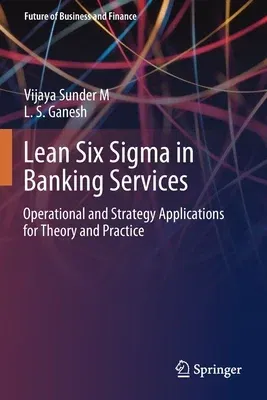CHAPTER 1 INTRODUCTION
1.1 The need for the hour
1.2 An introduction to Quality Management
1.3 From Lean and Six Sigma to Lean Six Sigma
1.4 Focus on this book
1.5 Scope and methods used
1.6 Summary of Chapter 1
CHAPTER 2 BACKGROUND OF KEY CONCEPTS
2.1 A Brief Overview of Service Quality
2.2 Competitive Advantage in Quality
2.3 Continuous Improvement
2.4 Organizational Learning in The Context of CI
2.5 Lean Services
2.6 Six Sigma in Services
2.7 A Brief Overview of Lean Six Sigma
2.8 Summary of Chapter 2
CHAPTER 3 **AN OVERVIEW OF BANKING SECTOR
** 3.1 Introduction to Banking
3.2 Types of Banking and associated practices
3.3 Quality Management in Banking
3.4 Process Improvement in Banking vs other sectors
3.5 Summary of Chapter 3
CHAPTER 4 A MORPHOLOGICAL ANALYSIS OF RESEARCH LITERATURE ON LEAN
SIX SIGMA FOR SERVICES
4.1 An Overview of Lean Six Sigma in Services
4.2 Data from Literature and their Classification
4.2.1 Fundamental Classification
4.2.2 Methodological Classification
4.2.3 Chronological Classification
4.2.4 Sector-Wise Classification
4.3 Morphological Analysis of the Literature
4.3.1 Dimension 1: Organizational Context of Application
4.3.2 Dimension 2: Desired Outcomes
4.3.3 Dimension 3: Implementation Systems
4.3.4 Dimension 4: LSS Tools and Techniques
4.3.5 Dimension 5: Integration with Other Philosophies
4.3.6 Dimension 6: Evaluation Methods
4.4 Discussion
4.5 Summary of Chapter 4
CHAPTER 5 LEAN SIX SIGMA PROJECTS IN BANKING FIRMS - Analysis of
Implementation Cases
5.1 An Overview of Research Literature on LSS in Banking
5.2 Evidence from Practitioners' Literature
5.3 Real Time Applications of LSS in Banking
5.3.1 Approach
5.3.2 LSS Project Management Method Used
5.4 Case Studies
5.4.1 Case A: Optimization of Employee Utilization
5.4.2 Case B: Accuracy Improvement in Payments Processing
5.5 Lessons Learned and Managerial Implications
5.5.1 LSS Project Management is a sub-Set of LSS Deployment
5.5.2 LSS As a Systems Approach for Process Improvement
5.5.3 Identification of Correct LSS Candidates
5.5.4 Management of Stakeholders in LSS Projects
5.5.5 Change Leadership for LSS Projects
5.6 Summary of Chapter 5
CHAPTER 6 LEAN SIX SIGMA AS A DYNAMIC CAPABILITY - An Analysis of
Banking Firms
6.2 Approach
6.2.1 Case Selection
6.2.2 Site Visits and Preliminary Interviews
6.2.3 Additional Interviews and Cross-Case Analysis
6.3 Findings
6.3.1 Compelling need for purposive creation of LSS Capability
6.3.2 LSS as a Vital Component of the Capabilities Network
6.3.3 Path Dependency and Emergence
6.3.4 LSS Enables Organizational Learning
6.3.5 Technical and Evolutionary Fitness of LSS
6.3.6 LSS exhibits VRIN Characteristics
6.3.7 LSS exhibits Agility towards

